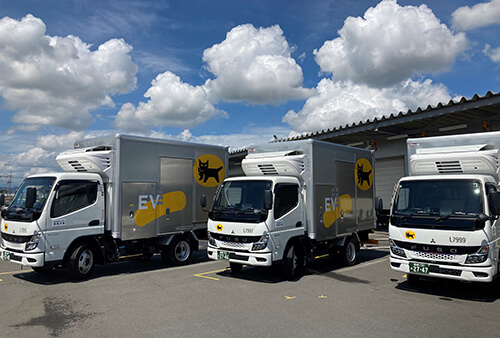Energy & Climate ~Mitigate Climate Change~
Climate change is one of the most important issues for the international community. The Yamato Group has identified "Energy & Climate" as one of its materialities, and is strengthening initiatives to address climate change based on its environmental policy. To achieve carbon neutrality by 2050, we promote, in logistics facilities, the use of electricity derived from renewable energy sources, enhance the efficiency of transport, and reduce the dry ice used for the delivery of refrigerated and frozen goods under the plan leading up to 2023 (Medium-Term Environmental Plan 2023).
Our Approach to Climate Change
The Yamato Group recognizes that climate change is an important issue for creating a sustainable society, and for the Group itself. We identify and evaluate climate-related risks, opportunities, and impacts and strive to disclose information based on the recommendations of the Task Force on Climate-Related Financial Disclosures (TCFD*). The Group aims to contribute to the realization of a low-carbon society by mitigating and adapting to climate change through our business activities, managing risks and creating opportunities, and growing together with society.
- *The TCFD was established by the Financial Stability Board (FSB) in 2015. In 2017, it issued recommendations on climate-related financial disclosures.
For information regarding disclosure in accordance with the recommendations of the TCFD, please refer to the Response to the Recommendations of the TCFD.
For information regarding disclosure in accordance with the recommendations of the Task Force on Climate-related Financial Disclosure (TCFD), please refer to the Response to the Recommendations of the TCFD.
Targets and results
Long-term target: Carbon neutrality by 2050*
Medium-term target: Reduce greenhouse gas (GHG) emissions by 48%, compared to fiscal 2020, by 2030* Details
- *The company's own emissions (Scope 1 and Scope 2)
For details of our medium- to long-term targets, please refer to the news release “Realization of Reduction Targets for 2030 Aimed at Virtually Zero Greenhouse Gas Emissions by 2050” (Japanese Only).
| Materiality | FY2023 Targets | FY2022 Targets | FY2022 Results | ||
|---|---|---|---|---|---|
| Energy & Climate | |||||
| Mitigate Climate Change | Reduce greenhouse gas emissions by 10% compared to fiscal 2020*1 | Reduce greenhouse gas (GHG) emissions by 8% compared to fiscal 2020*1 | GHG emissions were reduced 7% from fiscal 2020 | ||
| Reduce greenhouse gas emission intensity by 10% compared to fiscal 2020*1*2 | Reduce GHG emission intensity by 8% compared to fiscal 2020*1 | GHG emission intensity was reduced 6% compared to fiscal 2020 | |||
| Use 40% of electricity generated via renewable energy sources*3 | Expand the use of electricity generated via renewable energy sources | Electricity generated via renewable energy sources accounts for 22% of total electricity used | |||
| Reduce greenhouse gas emissions by 3% compared to 2022*4 | Collect data regarding GHG emissions of overseas subsidiaries and collect reference year data | Environmental data collection was completed at all overseas consolidated subsidiaries | |||
| Low-carbon transportation/offices: *Introduce low-carbontechnology *Enhance operational efficiency |
Continue field tests of new electric vehicles (EVs) and fuel cell vehicles (FCVs) (including medium size trucks for long-distance travel) with other industries | Conduct field tests of electric vehicles (EVs) and fuel cell vehicles (FCVs) with other industries (Including medium size trucks used for long-distance travel) | Completed preparation for field tests of new EVs and FCVs through joint research with other industries | ||
| Carry out investigations and collaborative research into automated mobility*5 with the aim of realizing a low-carbon transportation and preventing air pollution | Carry out investigations and collaborative research into automated mobility*5 with the aim of realizing a low-carbon transportation and preventing air pollution | Continued discussions and confirmation of technology regarding automated mobility with business partners | |||
| Reduce the use of dry ice to refrigerate packages: Substitute with 13,000 mechanical cold boxes and 1,200 refrigerator trucks |
Reduce the use of dry ice to refrigerate packages: Substitute with 9,000 mechanical cold boxes and 900 refrigerator trucks | Substituted 1,262 freight carrier trucks with refrigerator trucks | |||
| Electric vehicles (EVs) 1,500 units | Introduce 500 Evs | Introduced 331 Evs | |||
| Visualize operational status and enhance transport efficiency based on data by fully leveraging digital technologies. Promote eco-driving | Visualize operational status by fully leveraging digital technologies and utilize a simulation model to enlarge the size of trucks, enhance transport efficiency, and promote eco-driving | Enhanced the loading efficiency per truck 9.0% compared to fiscal 2022, based on visualization of operational data | |||
| Promote modal shifts (180 units for rail and sea transports) |
Promote modal shifts (160 units for rail and sea transports) |
Carried out a modal shift. (168 units per day transported by rail or sea) |
|||
| Conduct demonstration tests of a model sales office that uses 100% renewable energy | Conduct field tests of a model sales office that uses 100% renewable energy | Commenced testing of a model sales office that uses 100% renewable energy | |||
| Consolidate touch points (locations) and install LED lights | Consolidate touch points (locations) and install LED lights | ・Consolidated touch points (bases) ・Installed LED lights at 457 locations |
|||
| Measure energy and optimize energy management | Reinforce energy management | Develop an energy management structure | Launched the development of a system to optimize EV operations, standardize charging, and implement flexible inter-base power distribution | ||
| Conduct financial analysis and promote low-carbon investment | Analyze scenario and reflect in financial planning (reflect in next medium-term plan) | Conduct simple scenario analysis and information disclosure (including financial information) | ・Announced endorsement of Task Force on Climate-related Financial Disclosure (TCFD) in September 2022 ・Disclosed information on corporate site and in integrated report |
||
| Put internal carbon pricing (ICP) into operation, confirm effects, and consider use as an investment indicator | Set internal carbon pricing (ICP) | Gathered information, including case studies of other companies, and considered operations | |||
- Please use the scroll bar to see the rest of the table.
*1 In-house emissions of consolidated companies and Swan Co., Ltd. in Japan (Scope1 & Scope2).
*2 tCO2e /100 million yen of operating revenues.
*3 Consolidated companies and Swan Co., Ltd. in Japan.
*4 Overseas. Scope1 and Scope2.
*5 Automated mobility such as autonomous driving and truck platooning



In regards to consolidated companies and Swan Co., Ltd. in Japan, we have reduced our scope 1 and scope 2 GHG emissions 7% from fiscal 2020 against the target of 8%. The Group has reduced emissions by promoting the use of electricity derived from renewable energy sources and by changing vehicles . Meanwhile, we have increased the number of refrigerators and air conditioners and used dry ice to deliver vaccines, which are all factors that contributed to an increase in emissions. We will strive to use energy more efficiently at sales offices and in transport, reduce the use of dry ice, and use more renewable energy. We did not include the overseas consolidated subsidiaries in the calculation of emissions and emission targets because their businesses are small and their operating revenue accounts for less than 3% of the Group’s consolidated operating revenue. We have adopted a target of 3% year-on-year reduction in fiscal 2023 based on the understanding of data from fiscal 2022, and are advancing initiatives to achieve this. Might not be mentioned in the Japanese but should we use “EVs” here to keep consistent with other pages?
For more targets, please refer to the Sustainable Medium-Term Plans 2023.
Initiatives for Mitigating Climate Change
Low-carbon transportation and business sites and green logistics
1. Introduction of low-carbon technologies and enhancement of operational efficiency
The Yamato Group actively introduces (procures) low-carbon technologies for use in transportation and at its business sites. An example is the compact mobile refrigerator *1 we developed with a supplier. Using this refrigerator, we can reduce the amount of dry ice (CO2) used in the delivery of refrigerated and frozen goods. Additionally, we are engaging in the introduction of LEDs at logistics warehouses, modal shifts*2, reducing inefficient services, and joint transportation.
- *1D-mobico developed with Denso Corporation
- *2Launched a modal shift from July 2021 that utilizes marine transportation in collaboration with Tokyo Kyusyu Ferry Co., Ltd., which operates under the SHK Line Group
For more information about joint transportation operations, please refer to Green logistics in collaboration with our business partners.

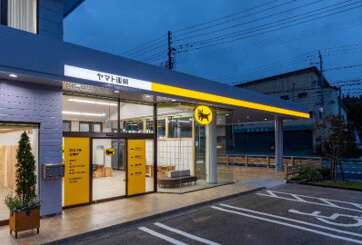
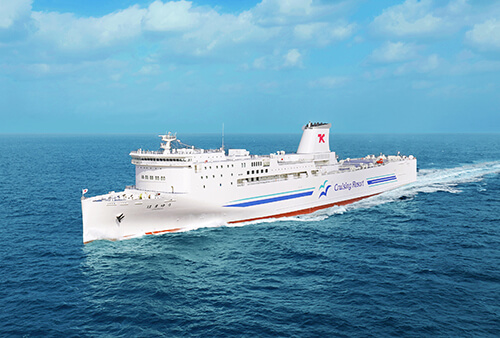
2. Promotion of the introduction of low-carbon vehicles
In progressing the Yamato Group’s shift to low-carbon vehicles, we aim to introduce 20,000 electric vehicles (EVs) by 2030.
To date, we have been actively promoting the replacement of existing vehicles with environmentally-friendly ones that suit the necessary transportation method and distance. In addition to the introduction of low-emission vehicles, such as LPG vehicles, CNG vehicles (natural gas), and hybrid vehicles, which already make up 70% of our total fleet, we have extensively utilized electric power-assisted vehicles and hand-pushed trolleys for short-distance transportation in urban areas to reduce our GHG emissions. We completed the introduction of electric power-assisted vehicles, which we launched in 2022, with 3,750 introduced by the end of fiscal 2022.
We began the introduction of small-sized, commercial-use BEV trucks*1 for medium-distance transportation in August 2022. In September 2023, we launched the introduction of the first 2t truck EVs*2 at Yamato Transport. Further, in November 2023,we launched demonstrations for light EVs*3 utilizing removeable batteries within pickup and delivery operations. We can achieve more efficient energy management by utilizing removeable batteries that are charged with electricity generated via renewable energy sources, such as solar power, during daylight hours.
While reducing GHG emissions is difficult from a technical perspective*4 for long-distance transportation, we are striving to resolve issues. Yamato Transport launched demonstrations of large-sized fuel-cell trucks together with suppliers and other companies*5 from May 2023. As a transportation business, we have been able to support the shift to low-carbon technology not only within the Group but also society as a whole by utilizing transportation equipment that is highly energy efficient and utilizing vehicles with low GHG emissions.
- *1Hino Dutro Z EV developed by Hino Motors, Ltd.
- *2New eCanter small-sized electric truck developed by Mitsubishi Fuso Truck and Bus Corporation
- *3Test vehicle MEV-VAN Concept developed by Honda Motor Co., Ltd.
- *4“Energy Technology Perspective 2020” published by the International Energy Agency
- *5Toyota Motor Corporation, Hino Motors, Ltd., Asahi Group Holdings, Ltd., NEXT Logistics Japan, and Seino Transportation Co., Ltd.
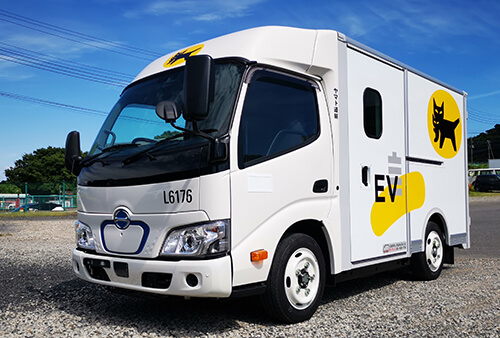
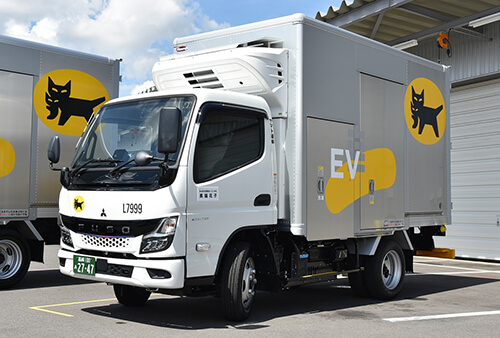
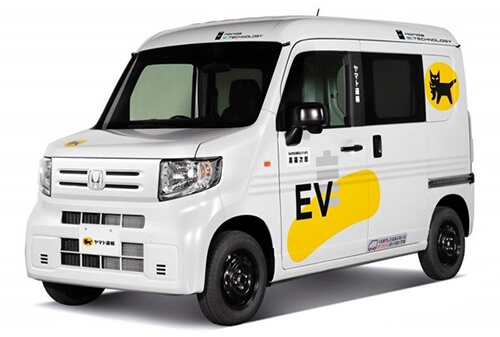

3. Use of renewable energy
Yamato Transport Co., Ltd., Yamato Auto Works Co., Ltd., and Yamato System Development Co., Ltd. are promoting the use of renewable energy. We purchased approx. 128,100 MWh of electricity derived from renewable energy sources in fiscal 2022 and approx. 1,100 MWh of electricity through PPAs,*1 and used approx. 500 MWh of electricity from our own solar power systems, primarily at Haneda Chronogate, the Atsugi regional branch, and Chubu Gateway. The percentage of electricity used that was derived from renewable energy sources increased from 10.9% in fiscal 2021 to 21.8% in fiscal 2022.*2 The purchase of electricity derived from renewable energy sources alone reduced CO2 emissions by 55,860 tCO2 or more.
- *1PPA: Power Purchase Agreement
- *2The percentage of electricity used by the consolidated companies and Swan in Japan that was derived from renewable energy sources


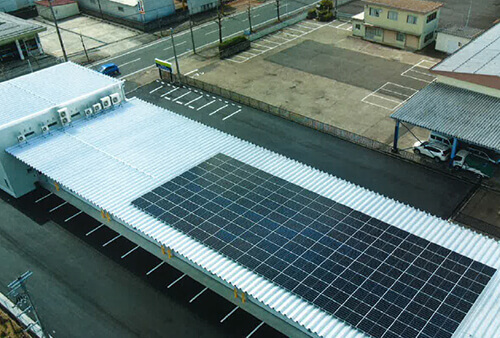
Collaboration with our business partners
The Yamato Group implements green logistics in collaboration with partners, such as joint transportation operations, contributing to improving transportation efficiency and reducing fuel consumption throughout the industry. For details, please refer to Green logistics in collaboration with our business partners.
Adaptating to Climate Change
The Yamato Group is reinforcing countermeasures for and increasing its resilience toward ever-worsening natural disasters. Please refer to Adaptation to Climate Change
Increasing Low-Carbon Products and Services
The Yamato Group is expanding its range of low-carbon products and services that offer improved customer convenience, limit redeliveries and reduce GHG emissions. For details, please refer to Provide environmentally friendly products and services.
Performance Data
The Yamato Group (consolidated companies and Swan Co., Ltd. in Japan)’s direct GHG emissions from the use of fuel, etc. (scope 1), were approx. 659,537 tCO2, and indirect emissions associated with the purchase and use of electricity or heat (scope 2) were approx. 200,674 tCO2 in FY2022. Scope 1 emissions were 21% of the GHG emissions that we have identified and scope 2 emissions were 7%. Scope 3 emissions, other indirect emissions, were approx. 2,215,691 tCO2, which was 72% of all emissions.
For detailed data regarding energy (including electricity derived from renewable energy sources) and greenhouse gas, please refer to Environmental data. The data below is excerpted from the Environmental data.
Targets for reducing GHG* emissions
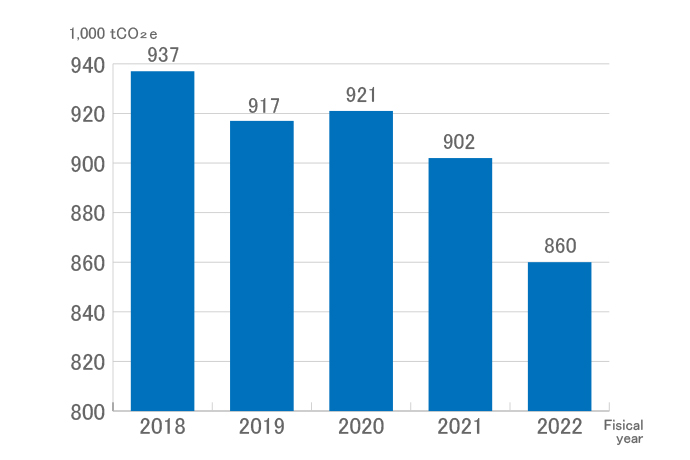

- Boundary/Scope of coverage: Scope 1 and scope 2 GHG emissions of consolidated companies and Swan Co., Ltd. in Japan (emissions used to calculate total emissions and GHG emission intensity)
- Calculation methods and emission factor: Please refer to Calculation methods and conversion factors.
- Third-party guarantee covers the fiscal 2022 GHG emissions of Yamato Holdings Co., Ltd. Please refer to Environmental Data.
* GHG emission intensity fell due to an increase in the percentage of electricity derived from renewable energy sources that was used.
Scope3 * emissions (FY2022)
| Category | Emission volume (tCO2e) | Emission rate (%) |
|---|---|---|
| 1.Purchased Goods and services | 1,804,232 | 81 |
| 2.Capital goods | 154,002 | 7 |
| 3.Fuel and energy-related activities not included in Scope1 or Scope2 | 133,474 | 6 |
| 4.Upstream transportation, and distribution | N/A | - |
| 5.Waste generated in operations | 2,630 | 0 |
| 6.Business travel | 5,856 | 0 |
| 7.Employee commuting | 54,698 | 2 |
| 8.Upstream leased assets | N/A | - |
| Subtotal (upstream) | 2,154,893 | 97 |
| 9.Downstream transportation and distribution | N/A | - |
| 10.Processing of sold products | N/A | - |
| 11.Use of sold products | 60,763 | 3 |
| 12.End-of-life treatment of sold products | 35 | 0 |
| 13.Downstream leased assets | N/A | - |
| 14.Franchises | N/A | - |
| 15. Investments | N/A | - |
| Subtotal (downstream) | 60,798 | 3 |
| Total | 2,215,691 | 100 |
- Please use the scroll bar to see the rest of the table.
- Percentages of emissions in the table above are the percentage of scope 3 emissions.
- For information on data boundary and calculation methods, please refer to Calculation methods and conversion factors. Percentages of emissions in the table above are the percentage of scope 3 emissions.
*Scope 3 emissions are indirect emissions outside of scope 1 and 2 emissions.
Number of Environmentally-Friendly Vehicles Owned
Additional detailed energy and climate-related information can also be found in the Yamato Holdings Co., Ltd. CDP climate change questionnaire response.
The Yamato Group is shifting to the use of low-carbon vehicles such as electric vehicles (EVs) and promoting the use of electric-assisted bicycles and carts. (aAs of March 2023, we have around 870 EVs, 2,980 hybrid vehicles, and 3,750 electric-assisted bicycles. See the graph, “Number of environmentally -friendly vehicles owned.”) Approximately 71% of the vehicles owned by Group consolidated companies in Japan are environmentally- friendly vehicles. We aim to introduce 20,000 EVs by 2030, through the phased introduction of small-sized BEVs from August 2022 and the new eCanter small-sized electric truck from September 2023.

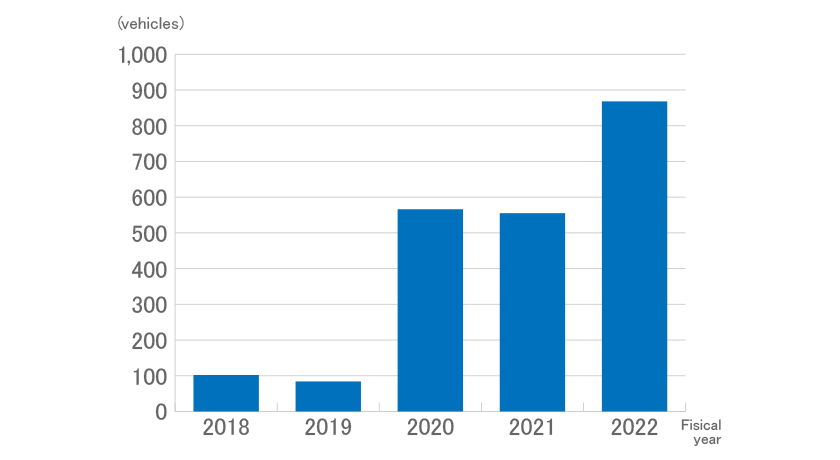
Examples of Initiatives for Mitigating Climate Change
Case Study 1: Model Store that Carries Out Energy Management for Electricity Generated via Renewable Energy Sources
From September 2023, the Yawata Sales Office (Yawata City, Kyoto Prefecture) of Yamato Transport Co., Ltd. launched full-scale operations as a model store that carries out energy management for electricity generated via renewable energy sources.
The Yawata Sales Office is the first in Japan to operate with a full fleet of electric vehicles (EVs). By introducing solar power generation equipment and batteries, we generate electricity during the daytime to provide charging for EVs and a portion of the building’s electricity needs.* Furthermore, we are carrying out energy management, such as reducing the bias in peak electricity supply by simultaneously charging EVs at night through a system that standardizes electricity generation and other measures.
- *For the portion that cannot be covered by solar power generation, we purchase CO2-free electricity from KEPCO THE KANSAI ELECTRIC POWER COMPANY CO., INC.
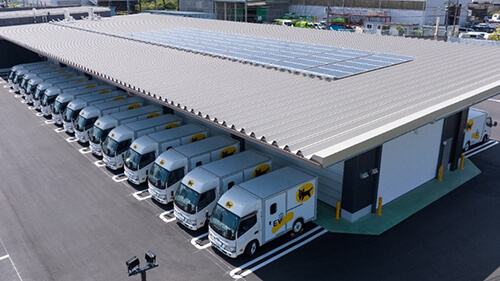
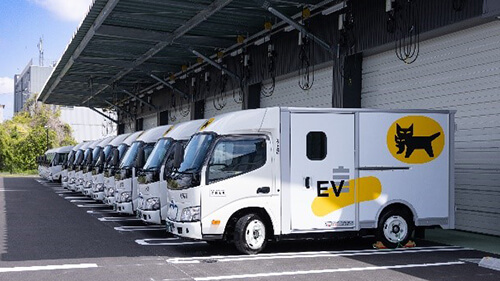
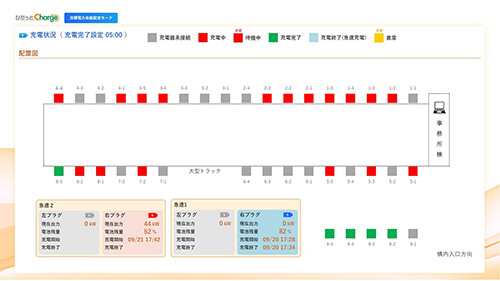
Case Study 2: Initiatives in Collaboration with Local Communities
In July 2022, Yamato Transport’s project to realize green delivery was selected as a project in the Green Innovation Fund Project/Smart Mobility Society Construction by the New Energy and Industrial Technology Development Organization (NEDO). This project advances initiatives aimed at energy management through the introduction and operation of EVs within Gunma Prefecture. As of the end of fiscal 2023, we have introduced 50 EVs within Gunma Prefecture, and are gradually developing measures in each location.
In June 2023, Yamato Transport Co., Ltd. concluded a partnership agreement on co-creation for achieving carbon neutrality with Gunma Prefecture to further reinforce collaboration between the two parties with the aim of achieving carbon neutrality and a sustainable society that is beneficial to all citizens, companies, and local communities.

